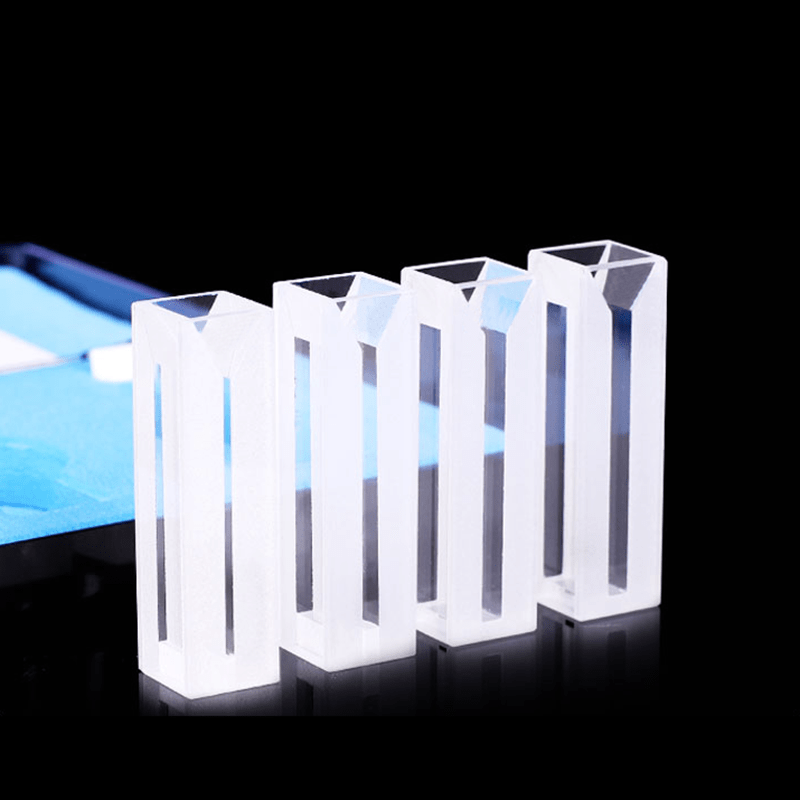The Position of Cuvette Size in Ensuring Correct Medical Analysis
The Position of Cuvette Size in Ensuring Correct Medical Analysis
Blog Article

The Great things about Cuvettes and Quartz Vials in Scientific Study
In scientific research, the precision and reliability of measurements are paramount, especially in areas like spectroscopy, compound analysis, and biology. One important component that ensures precision in these reports may be the cuvette, especially cuvet. Understanding the benefits of cuvettes and the benefits of using quartz vials can significantly affect the results of experiments and lab work.
Detail in Spectroscopy
Cuvettes are important for holding fluid products in various analytical devices, most notably spectrophotometers. These devices measure the absorbance or transmission of light through a sample, and the cuvette acts since the package for the trial all through analysis. The measurement and substance of the cuvette play an essential position in ensuring the precision of the measurements. Quartz vials, specifically, provide exceptional visual clarity, enabling appropriate light indication across a wide variety of wavelengths, including ultraviolet (UV) light. That makes quartz vials a fantastic choice for spectroscopic tests, wherever accuracy is critical.
Toughness and Substance Resistance
Quartz vials stick out for their toughness and resistance to severe chemicals. Unlike plastic cuvettes, quartz vials are less inclined to degrade or respond with compounds in the sample, ensuring that the outcomes of the experiment stay unaffected by potential contamination. That quality makes quartz vials specially of use in surroundings where hostile solvents or high temperatures are involved. Their power to withstand serious conditions without diminishing the integrity of the sample is one of the main factors they are favored in several lab applications.
Precision in Measurement and Form
How big a cuvette is not a one-size-fits-all situation. The dimension of the cuvette, such as for example its journey period, impacts the volume of the taste and the quantity of light that moves through. Selecting the proper cuvette size for the specific try assures that the answers are maybe not skewed due to under or over-concentration of the sample. Quartz vials come in many different sizes and patterns, allowing scientists to select probably the most appropriate option based on the needs of their experiment. This flexibility contributes to more exact data and permits greater get a handle on around experimental conditions.
Openness and Light Transmission
Quartz is known for their outstanding transparency, particularly in the uv (UV) and apparent gentle spectra. That makes quartz vials well suited for used in instruments that want distinct optical trails, such as for example UV-Vis spectrophotometers. The superior light transmission homes of quartz make sure that the mild moves through the trial with little spreading or assimilation, ultimately causing more accurate readings. For experiments that demand large accuracy, quartz vials offer a distinct gain over different materials.
Long-Term Consistency
When in study laboratories, it is essential to have trusted resources that maintain their reliability over time. Quartz vials aren't just chemically resistant but also very durable, meaning they're less likely to experience wear and tear. This long-term stability ensures that researchers can use quartz vials for extensive intervals without worrying all about destruction or the need for frequent alternatives, contributing to cost-effectiveness in the long run.
To conclude, equally cuvettes and quartz vials offer a range of advantages that improve the product quality and reliability of laboratory experiments. From their remarkable visual quality with their compound opposition and longevity, these instruments are essential in clinical research. By selecting the right cuvette measurement and employing quartz vials, analysts can ensure accurate dimensions and obtain more reliable effects within their studies. Report this page